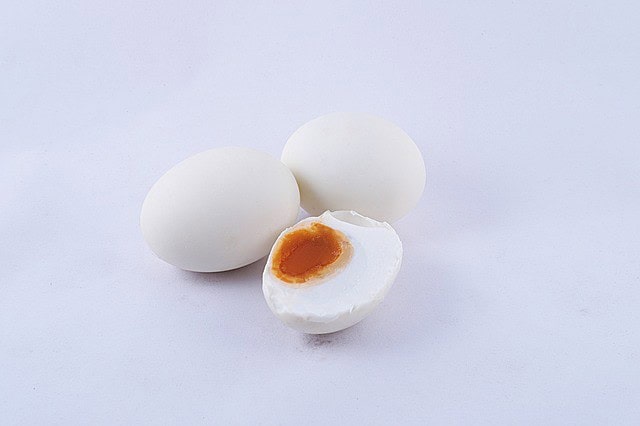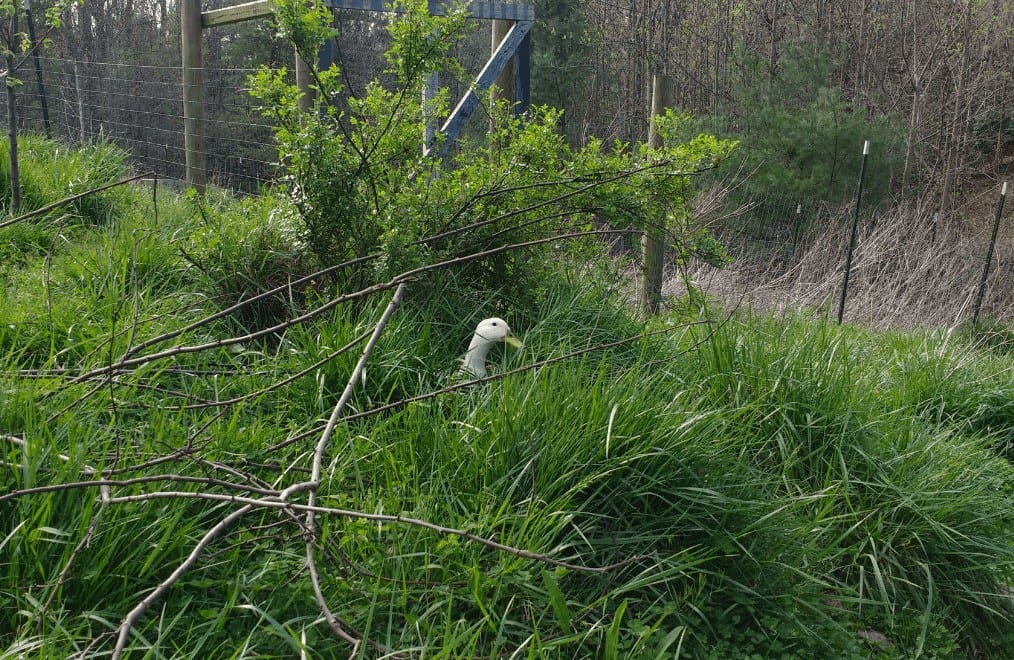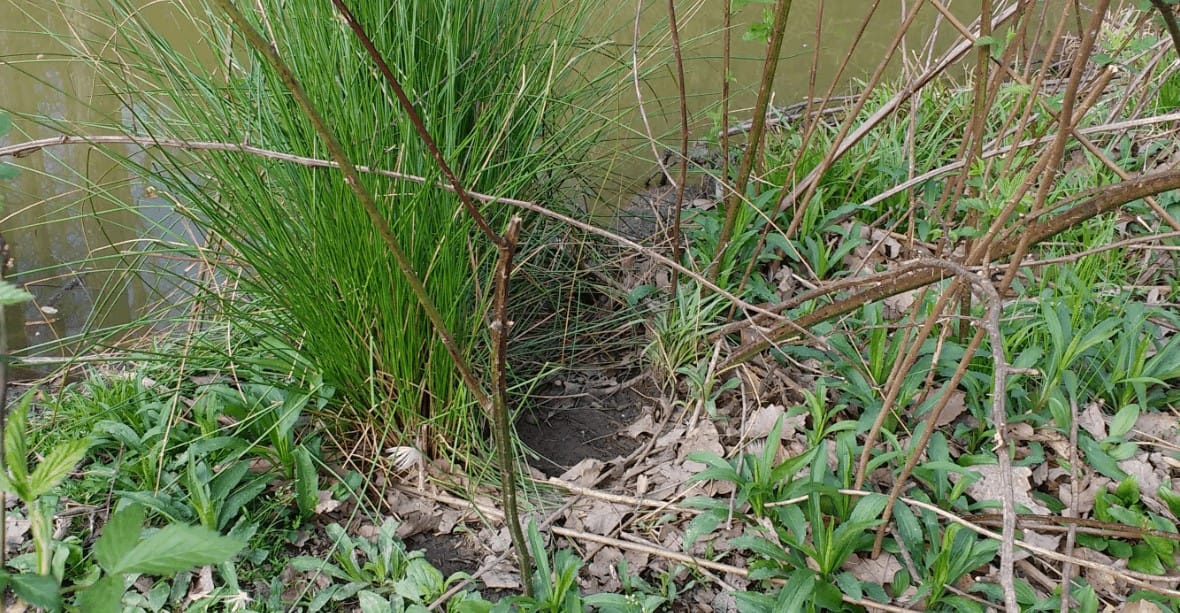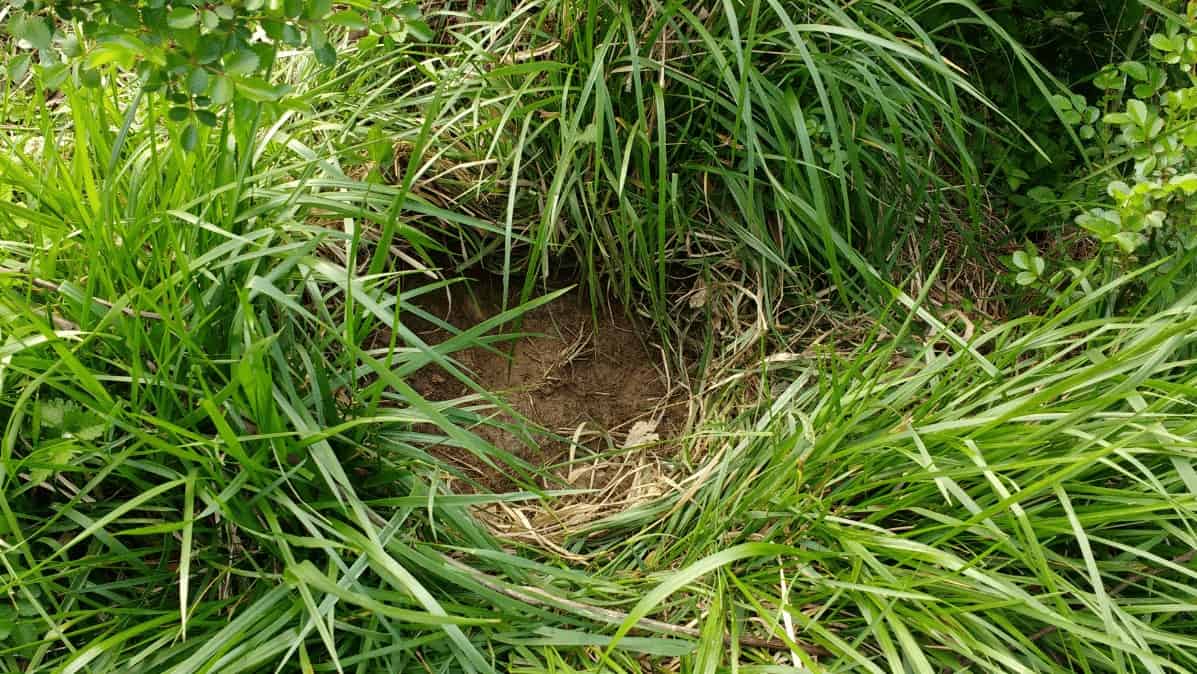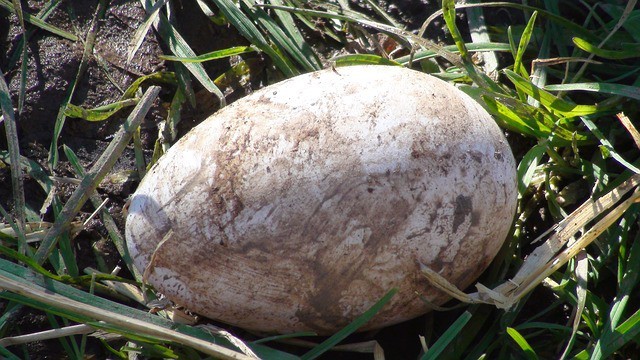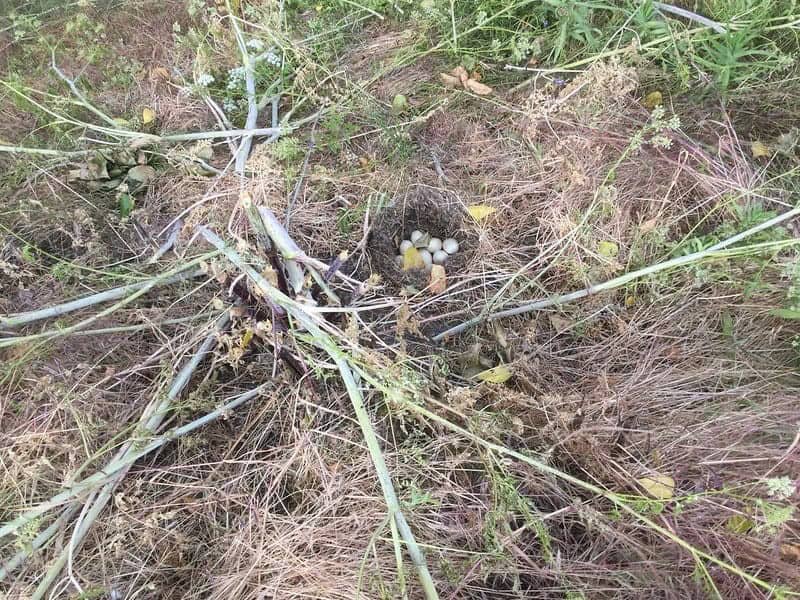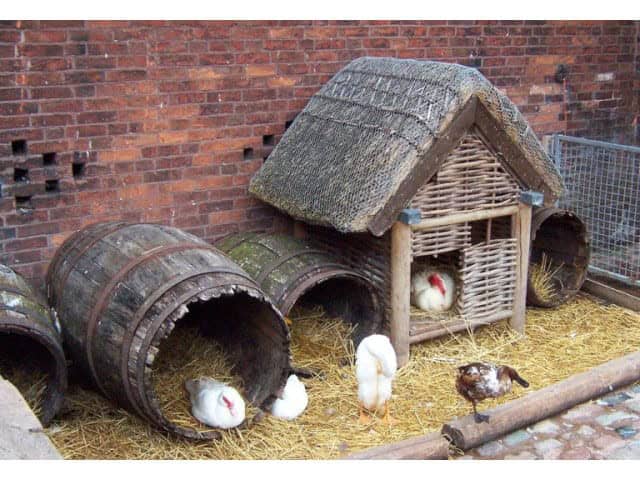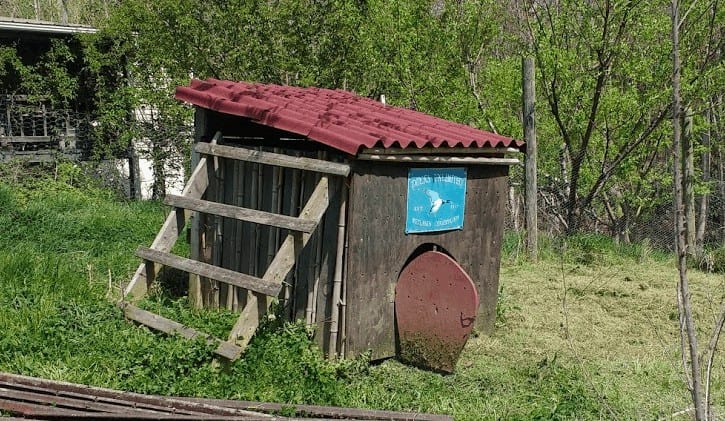While there are some notable parallels between keeping ducks and chickens, one of the most significant areas of convergence lies in their housing requirements. Both can thrive in similar coop or shelter designs with only minor adjustments necessary. Furthermore, both species can be fed a diet comprising chicken food, provided that a few supplemental elements are added to cater to a duck’s unique needs.
Moreover, it is entirely feasible to cohabitate ducks and chickens together, as long as separate bathing facilities are made available – ducks, for instance, require a pond for bathing, whereas chickens prefer a dust bath. However, the similarity ends when considering their nesting habits. Despite both laying eggs, ducks and chickens exhibit distinct natural nesting preferences that diverge significantly.
Weird Duck Nesting Habits
While chickens are notorious for their fastidious nature, keeping their nests spotless at all times, ducks seem to have a different approach. In fact, ducks can turn even the tidiest of nests into a mess within just a couple of days. One key difference between these two bird species is where they choose to nest. Chickens prefer to keep their nests off the ground and in dry locations, whereas ducks are more likely to nest directly on the soil.
This natural inclination leads ducks to even use their bottoms to create shallow depressions in moist soil, much like a makeshift hole-in-one golf swing. And if the soil isn’t wet enough to facilitate this process, they’ll take a leisurely dip in the water before returning to the nest area with feathers dripping wet, essentially watering down the spot.
As for nesting habits, chickens are known to form strong bonds with specific nest boxes, often taking turns laying eggs in the same exact spot day after day. Even if multiple options are presented, they’ll stick to their favorite. In contrast, ducks tend to move on from one location to another, failing to develop a lasting attachment to any particular nesting site.
Ducks are Smart (and Secret) Nesters
As I observe my Pekin ducks, one of them cautiously emerges from her nesting spot, carefully examining the surrounding area. This curious behavior is a common trait among ducks, as they often return to the same location multiple times before becoming wary of potential threats. But when their eggs consistently go missing (perhaps at the hands of enthusiastic foragers), they adapt by seeking out new, secluded areas to lay their eggs.
It’s fascinating to see these intelligent birds adjust their habits in response to environmental changes.
Ducks Nest in Multiple Locations
While ducks may have a preferred nesting spot on warm mornings, they often have multiple locations stashed away for varying uses. In fact, if you’re dealing with a larger flock, you might notice that the birds set up multiple nests and take turns laying eggs in each one. This diversification strategy allows them to hedge their bets, so to speak, by not putting all their eggs in one nest.
Frequent Puzzling Nest Testing
For ducks seeking the perfect spot to relax, this grassy knoll is an ideal nesting site. Interestingly, these feathered friends often conduct a pre-laying reconnaissance of potential nests before committing to one. In my experience, I’ve observed them spend several minutes perched on a nest only to abandon it and inspect others, sometimes trying out three to four nests before settling into the original choice for egg-laying.
Ducks Create Seasonal Nests
The ducks’ nesting habits are characterized by a cyclical pattern, with certain nests being used during specific times of the year. For instance, one popular nest was occupied in late winter but remained unused for the season once spring arrived. Interestingly, when ducks abandon a nest, they often cover it with debris such as leaves, bark, and clumps of grass, effectively taking it out of commission for several months.
However, this doesn’t mean the nest is forgotten – the ducks will eventually return, clear away the obstructions, and put the nest back into use, seemingly following a seasonal rotation of sorts. It’s as if they have multiple ‘homes’ or nests that cater to different times of the year, similar to how some people maintain separate residences for various seasons.
Duck Dirt on Eggs
One of the most intriguing aspects of duck nesting habits is their propensity to deliberately soil their eggs. Unlike chickens, who rarely defecate in their nests, ducks will not only drop eggs but also roll them in waste. The reasons behind this behavior are unclear, although I’ve observed that it tends to occur more frequently during hot weather or when multiple ducks share the same nesting site for extended periods.
It’s possible that the birds engage in this practice to keep the eggs cool and humid until they’re ready to start incubating. Alternatively, it may serve as a method of concealing the scent of freshly laid eggs by masking them with the pungent aroma of duck droppings.
The Importance of Observation
Over the past six years of raising free-range and confined ducks, I’ve developed a keen eye for the subtle details that reveal their nesting habits. As a homesteader, this attention to detail has been a rewarding aspect of my experience. It’s not just about enjoying the process, though; making accurate observations can have a significant impact on the success of your duck-keeping endeavors.
By adapting your approach based on what you learn, you can optimize conditions for your ducks, other livestock, and even your garden. In this regard, I’m eager to share some tried-and-true tips that have worked well for domesticated ducks, and which may also benefit your own flocks. However, it’s essential to recognize that these guidelines will need to be tailored to your specific environment, duck breeds, and management practices.
Different Environments – Different Results
When it comes to ducks and other animals, environment plays a significant role in shaping their behaviors and habits. This sensitivity is particularly evident when it comes to nesting. For instance, my observations have shown that free-range ducks exhibit a unique laying pattern, with eggs often being deposited between pre-dawn and 9:30 am. In contrast, housed ducks tend to maintain a more predictable schedule, typically laying eggs between 7:00-9:00 am.
Less Light Dependency
While chickens are highly sensitive to light and tend to lay eggs only when daylight is present, ducks are more flexible. I’ve observed my own ducks laying eggs even before sunrise, and their egg-laying habits remain consistent regardless of whether it’s a sunny or rainy week. In contrast, heavy cloud cover significantly reduces chicken egg production. This could be attributed to herd mentality among confined ducks, but it’s merely speculation at this point.
What’s crucial is recognizing that ducks have unique needs contingent upon the conditions in which they’re kept.
The Secrets to Collecting (Mostly) Clean Eggs
When observing the nesting and laying habits of ducks, it’s easy to become captivated by their intricate behaviors. Yet, these habits can often lead to difficulties when attempting to collect pristine eggs. Fortunately, there are a few simple strategies that can significantly boost your chances of finding and collecting fresh, clean eggs on a daily basis.
Trick # 1: Morning Confinement
Unlike chickens, ducks are morning layers, with most of their egg-laying activity concluding by around 9:30 am each day. By confining them until they’ve finished laying, you can significantly increase the chances of collecting most of your ducks’ eggs in their nighttime shelter. Although it’s not a hard and fast rule, some breeds like Khaki Campbells, Pekins, and hybrid layers are less likely to exhibit this behavior, as they tend to follow a more consistent laying schedule.
However, many seasonal layer breeds with heritage roots have a tendency to hold off on laying until they’ve found their ideal nesting spot.
Trick #2: Withhold Water
When securing your ducks for the night, consider withholding their water from 9:30 PM to 9:30 AM the next day. This simple practice can help maintain a tidy environment within their enclosure and nesting area. It’s crucial not to deprive adult ducks of both water and food, but this habit also aligns with good animal husbandry practices. Keep in mind that leaving food in an overnight shelter can attract unwanted visitors like raccoons and bears, which tend to target unsecured food sources.
By removing the temptation, you’re inadvertently practicing predator deterrence. However, it’s essential to note that ducklings require access to both feed and water while they’re in their brooder environment.
Trick #3: Morning Feed
For optimal duck husbandry, it’s essential to provide their feed in a way that promotes efficient waste management. A suggested approach is to deliver most of their nutrition in the morning, followed by a browsing period for the remainder of the day. This strategy allows your ducks to do most of their pooping on the pasture during the daylight hours, minimizing the likelihood of leaving behind an unpleasant surprise in their house at night.
Some astute ducks have developed a pre-bedtime habit of drinking copious amounts of water, anticipating their confinement for the night. While this might result in some extra waste before morning laying, as long as your sleeping quarters and nesting areas are properly separated, any issues should be mitigated.
Trick #4: Keep Cool Nest Areas
To regulate temperature and humidity, ducks tend to create messes in their nests. By placing the nests in cooler, more humid areas of the duck shelter, you can encourage cleaner eggs. Morning shade is often a good spot, or consider digging an underground nesting area that benefits from natural soil cooling and humidity. Additionally, ducks prefer laying in dark environments, which is why they frequently opt for heavily shaded locations in nature.
Creating nearly dark nesting areas not only helps keep things cool but also provides an added sense of security for the ducks.
Trick #5: Use Natural Nesting Materials
As a duck owner who free ranges my birds, I’ve had the privilege of observing their natural preferences when it comes to nesting materials. Interestingly, they never opt for straw or pine shavings when given other choices. Instead, they tend to favor dirt and partially decayed leaves. When it comes to man-made nesting options, my ducks show a clear preference for hay over straw. In fact, the hay bales in my animal shelters often become makeshift nests for my Muscovies.
On the other hand, I’ve never seen them attempt to make a nest in straw. If I had to guess what’s my ducks’ all-time favorite nesting material, I’d say it’s hands down double shred hardwood mulch. Whenever I receive a delivery of this affordable and abundant resource, my ducks can’t get enough of it. They’ll dig enthusiastically with their beaks to create cozy nest holes, often uncovering hidden eggs in the process. As a result, wood mulch has become my go-to nesting material for ducks.
Not only is it a hit with my feathered friends, but it also offers some practical benefits. For instance, it quickly absorbs liquids and helps to dry up duck droppings – a major plus when it comes to maintaining clean living spaces. Yes, the mulch can get heavy and compacted over time, and it may take a bit longer to compost than other materials. However, the end result is well worth the effort: after a year or so of composting, the resulting soil amendment is perfect for my vegetable garden.
Trick #6: Make Inviting Nest Boxes
Conservationists often create tunnel-like nests for mallards using chicken wire and natural materials, providing a safe haven for the birds to lay their eggs. Domesticated ducks, on the other hand, can be trained to nest in simpler structures like chicken coops. However, why not take it up a notch and design a nesting area that caters to your ducks’ preferences? Here are some innovative ideas to consider.
One approach is to utilize mallard nesting tubes, which can help encourage broodiness and successful incubation of eggs. This setup can be easily replicated at home. Another option is to repurpose large totes or containers by cutting a duck-sized entrance and lining the interior with natural nesting materials. This cozy setup provides ample space for your ducks to nest comfortably. For those looking for a more unique solution, consider upcycling old whiskey or wine barrels.
While they may not offer ideal shade and depth, they can still be effective nesting boxes – just be prepared to use tools like fruit pickers or trash picker tools to collect eggs. Cutting a door into the barrel can also provide easier access. However, keep in mind that these barrels will require regular cleaning with a rake to maintain their integrity.
As an alternative, consider using less expensive 55-gallon drums, which offer a similar rustic charm without the need for specialized equipment or maintenance.
Trick #7: Make Your Job Easy!
One of my DIY duck nest box creations, crafted from repurposed wood, boasts a clever feature – a built-in trellis for growing beans that provides natural shading in the summer months. The peach tree situated nearby also contributes to the cozy ambiance. As you can infer from these innovative nesting solutions, ducks have a strong affinity for deep, enclosed spaces with an open doorway.
It seems that as long as you can replicate this tube-like environment, any nest box design will be met with quacking approval. While aesthetics are important, it’s crucial to prioritize ease of egg collection and cleaning when designing your duck’s nesting haven. By doing so, you’ll help maintain the cleanliness of their eggs through frequent harvesting and material changes.
What to Do With Dirty Eggs?
Although proper handling and storage can minimize the risk, it’s still possible to end up with dirty or imperfect eggs from time to time. In my experience, I tend to quickly consume such eggs to prevent them from attracting pests or spoiling on my counter. Alternatively, if I have an abundance of eggs, I’ll cook them up and use them as a treat for the ducks.
Another option is to wash and refrigerate them, although this may not completely eliminate the risk of contamination due to the natural thinning of eggshells over time. As eggshells become thinner, airflow increases, which can allow bacteria and other contaminants to enter the pores of the shell. This is why older eggs tend to float while newer ones sink. Despite this, duck eggs in particular are a treat, and I rarely worry about their quality or storage as long as they’re kept fresh.
